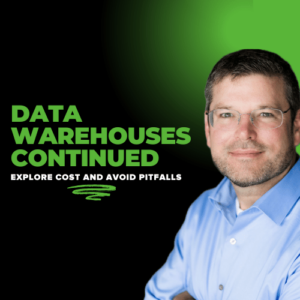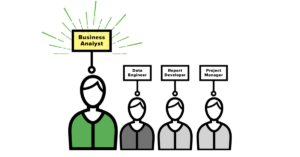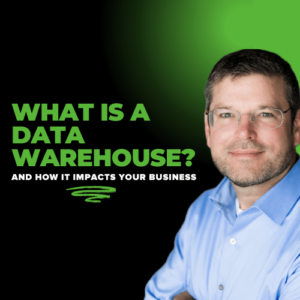These days you can buy some really great analytics software. In the past ten years it has improved dramatically, and today it enables rapid report development, easy dashboarding and robust ad-hoc data analysis. You can get it hosted or installed on-premise, and run it in virtually any environment on any database. In addition to all that, it can be used with ease by almost anyone. It’s that good.
Furthermore, the companies selling these amazing applications have it down to a science. In the demo you’ll see just how easy it is to drag measures to create charts, then add filters or do time-comparison analysis, then create beautiful visualizations with a few clicks. And while the software has improved, the cost has actually come down. Heck, you can go the SAAS route and get started for almost no investment at all.
Understandably, the temptation to buy it is very high. Sales are through the roof. They’re so high, in fact, that I’m betting this warning comes too late for 90% of readers because you’ve already invested. But let’s not let that stop us from talking about what is really going on here.
Buying analytics software is often a mistake, and almost always leads to frustration and disappointment.
Now I’m sure you’re asking yourself how I can make this outlandish claim after I just went on and on about how the software itself is amazing. Good question. Let me explain.
You see, our company is who you call after you make such a purchase and quickly realize the software doesn’t give you the same capabilities it did in the demo. It’s never a good situation, and the general consensus is that a mistake has been made. Management is frustrated with the purchase. The technical team is frustrated with the software vendor. And the end-users are frustrated with the technical team. This happens with surprising regularity, and we’ve had a front-row seat from which to witness it time and again.
Of course, the software itself isn’t the problem. It has the exact same capabilities it did when you saw the demo, or even greater capabilities by the time you make the purchase. The problem lies outside the software.
There are a variety of factors that may impact performance when you get the software. Some of these are obvious, such as system hardware, solution architecture and software setup and configuration. It’s quite common to need specific expertise to properly implement analytics software, but most companies realize this and make the necessary investment to ensure it’s done right. In some cases you may also need to hire people with specialized skills and titles like report author or abstraction layer architect, but even this problem is surmountable with a little effort and some budget.
There is one factor, however, that is often overlooked, seldom mentioned by reporting software vendors, and perfectly capable of derailing your analytics efforts entirely. This factor (the dirty little secret of the industry, and the culprit in so many failed reporting efforts) is the quality of your data.
When analytics software vendors demonstrate the awesome capabilities of their software they almost always do so using their own carefully constructed sample data. Their data has no meaningless or incorrect entries. It has no duplicates. Everything is labeled in plain English. All the hierarchies, like location and organizational data, are logical and well organized. And most importantly, it’s modeled for maximum reporting performance.
Unless you’re in the tiny minority of companies that have already developed an enterprise data warehouse based on a star schema, your data isn’t going to look nearly as nice when you see it for the first time through analytics software, and you’re going to be able to do a lot less analysis with it. In fact, if you have multiple data sources, you might not even be able to load it at all until you do some serious data integration work.
The number of data sources you have, the type of data, its level of integrity and cleanliness, and the software you purchase will all determine the type of data preparation necessary to reach different levels of analytics capacity. Most companies aren’t prepared or lack the necessary expertise to adequately integrate and prepare the data, and others aren’t even aware that such a need exists.
In this situation, buying software can be a costly mistake. Here’s why. Each analytics software application offers different options for sourcing data, and the performance of even the most advanced apps will be directly impacted by the data architecture you implement. So the choice of software can limit or enhance your data integration options, or even dictate a particular approach that might not be right for you. If you buy software first you are taking a huge chance that you may end up with all the right features except for the ones that really matter when it comes to making it actually work with your data.
Only by considering the data and the business requirements together can you determine the best combination of analytics software and data preparation approach, or estimate the total cost of your initiative.
The best practice is to consider the analytics software purchase as just one part of an orchestrated analytics initiative that includes, or better yet, begins with a careful analysis of your data preparation needs. This analysis, best performed by someone with extensive data staging and ideally warehousing expertise, involves profiling the source data and evaluating the business requirements and software/architecture options. The outcome should be an overall solution architecture that includes a software recommendation, a proposed data model and an estimate of the effort required to prepare the data.
If you’ve been thinking about purchasing reporting software but you haven’t done your homework regarding data preparation, you might want to postpone that investment until you understand the other half of the equation: your data. You’ll have to deal with your data quality issues eventually, and by doing it first you can avoid a purchase that may quickly come to feel like a mistake.







